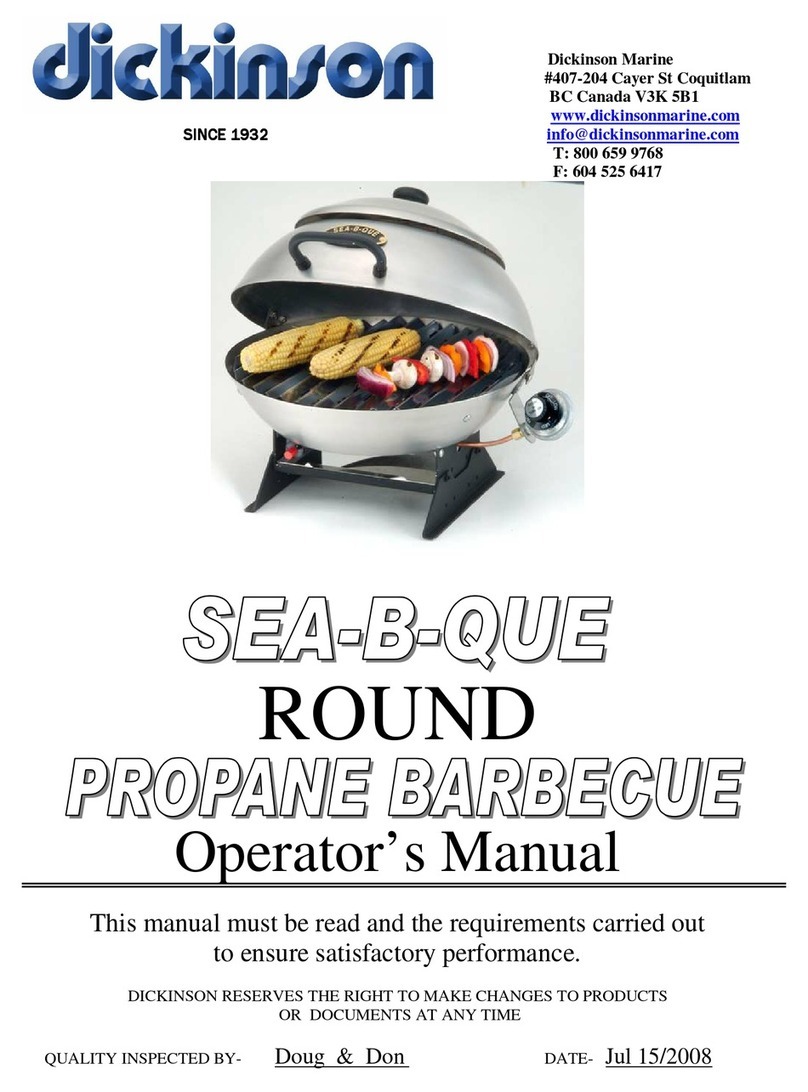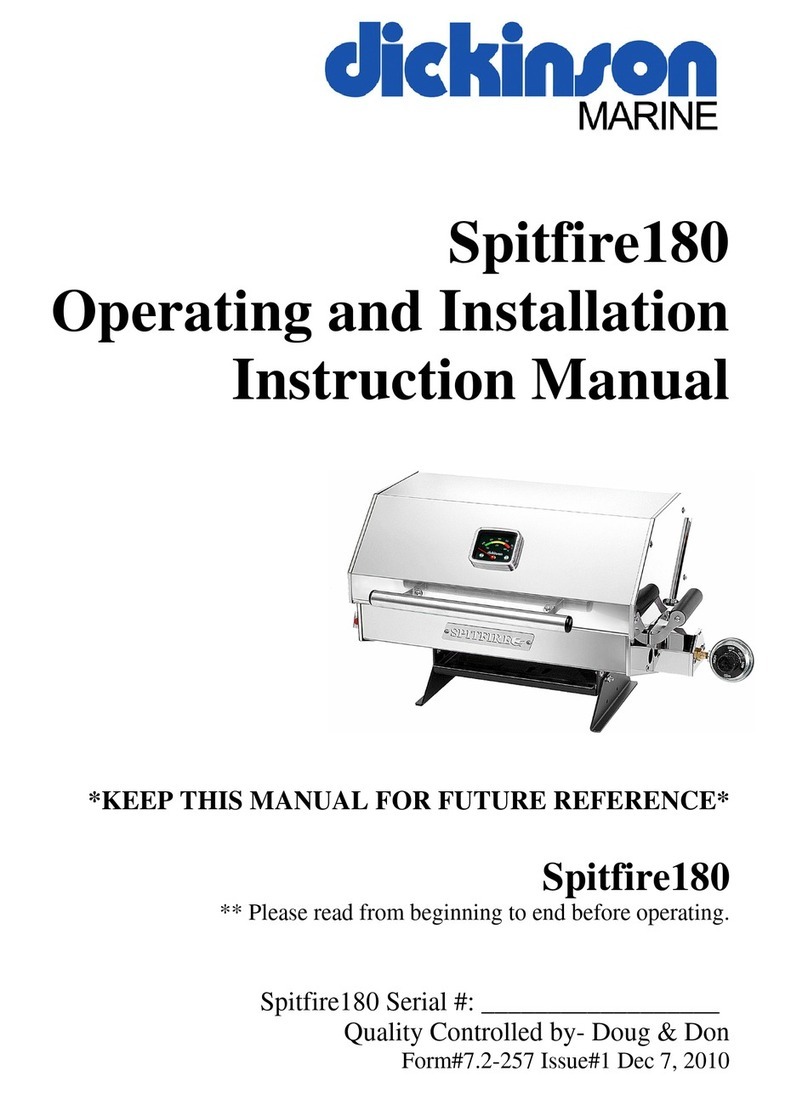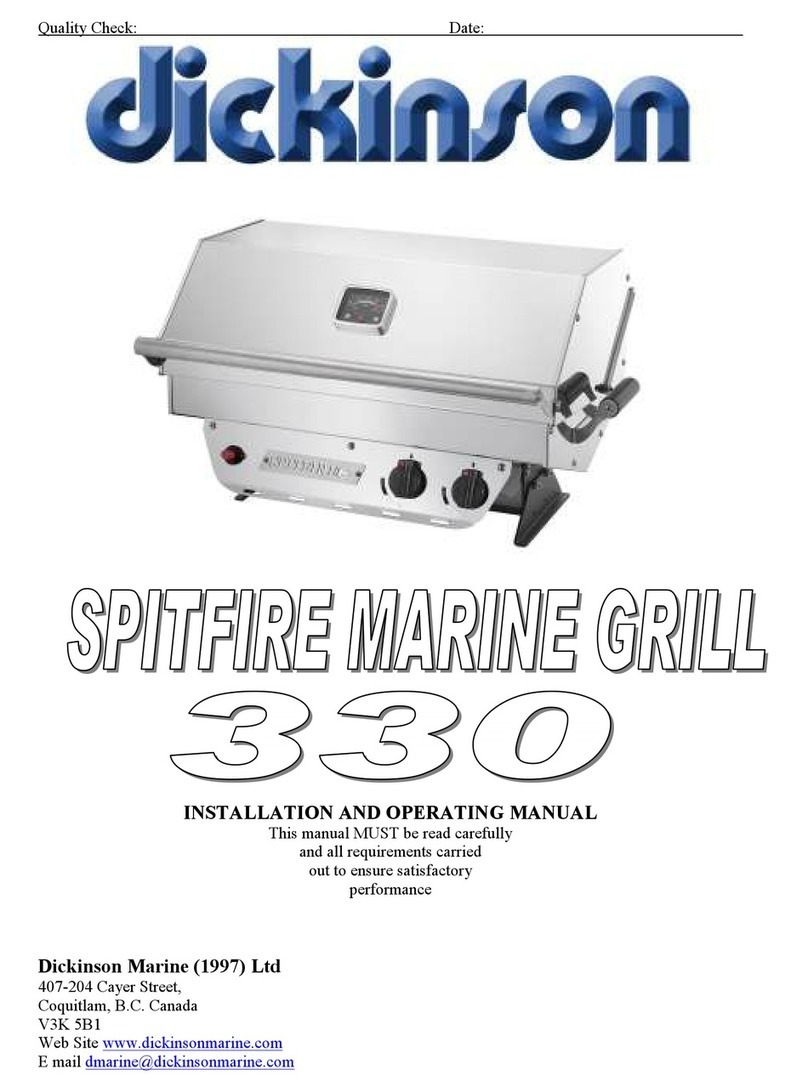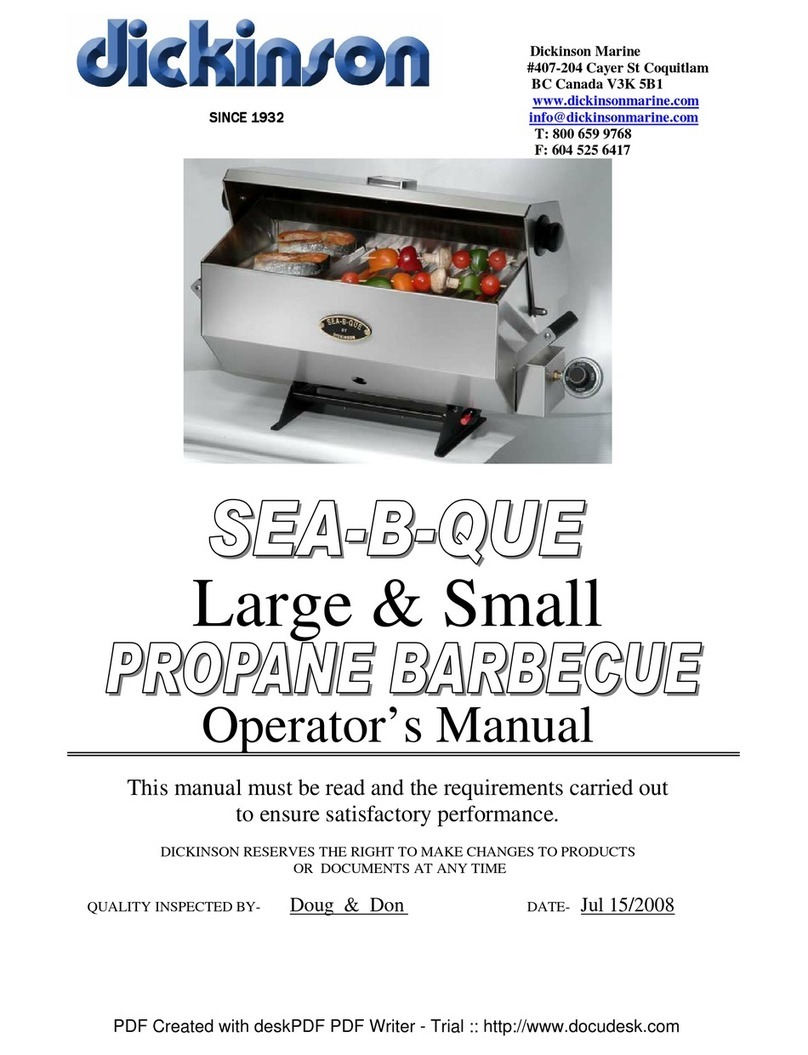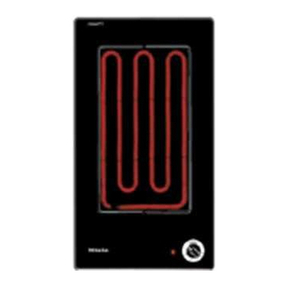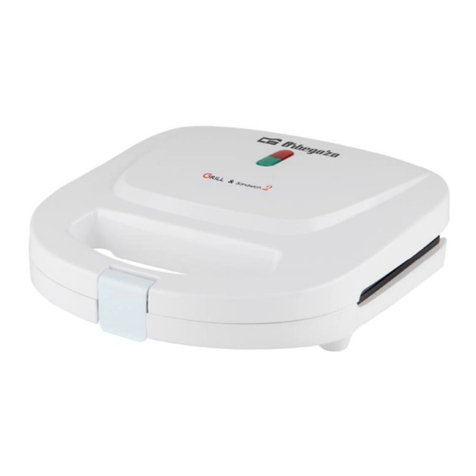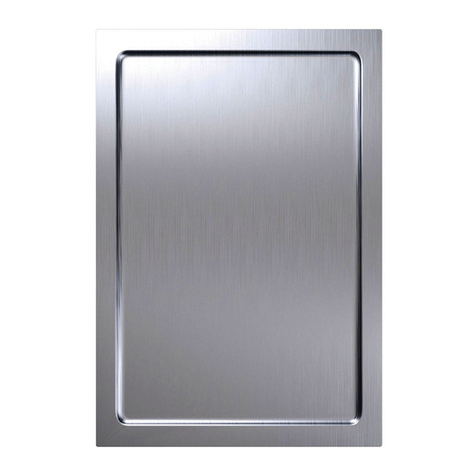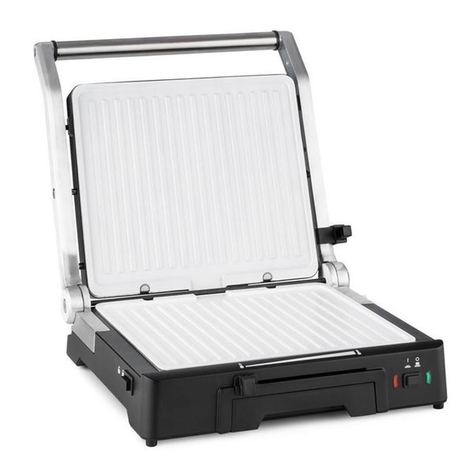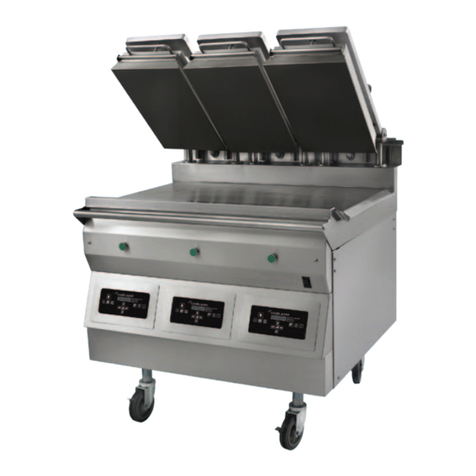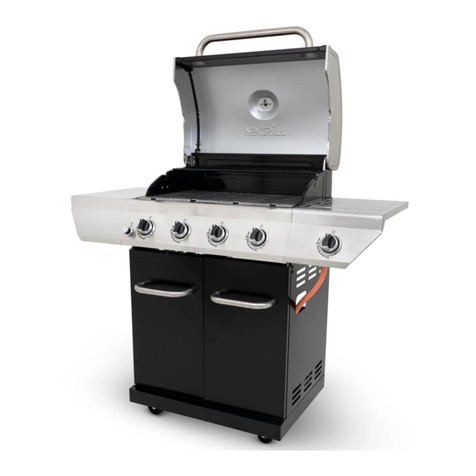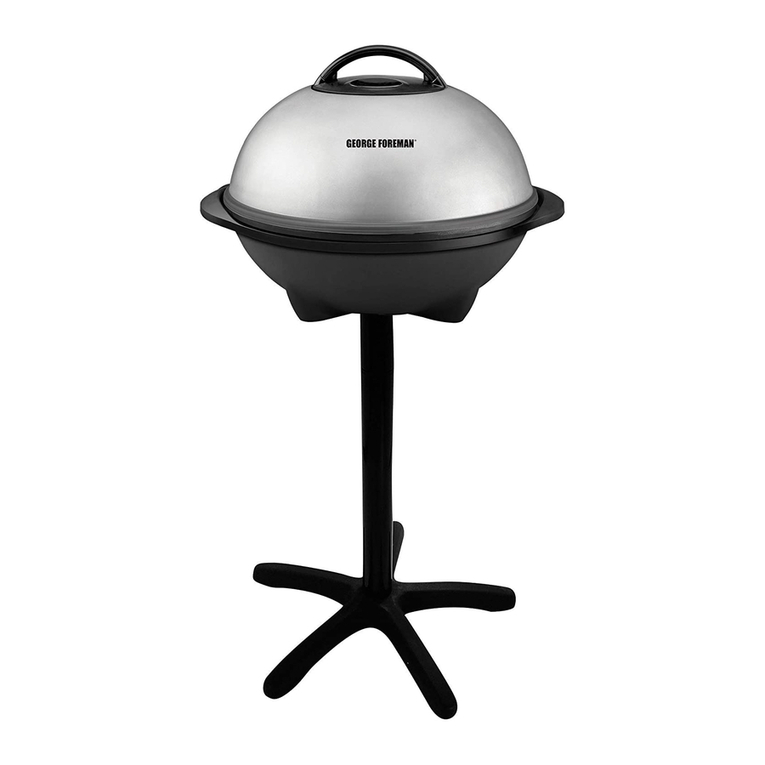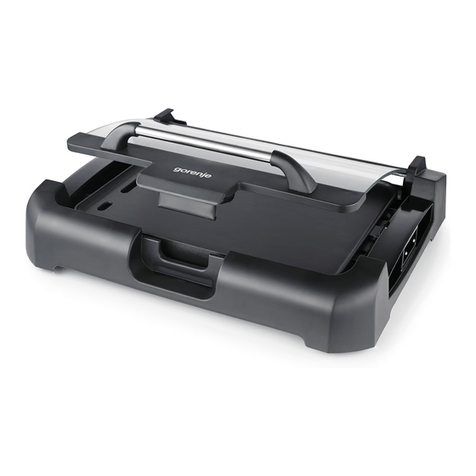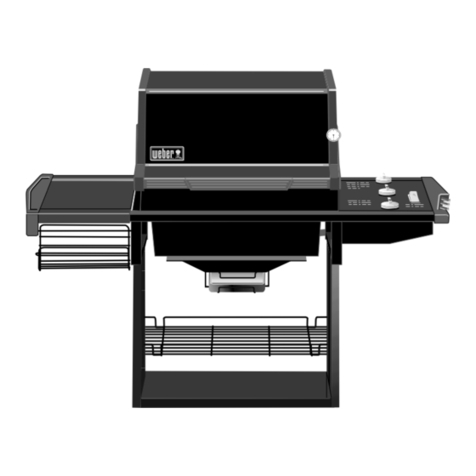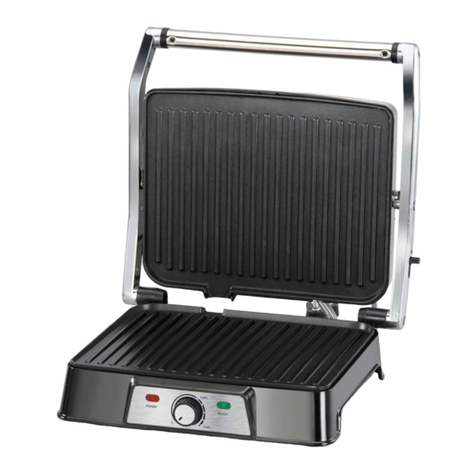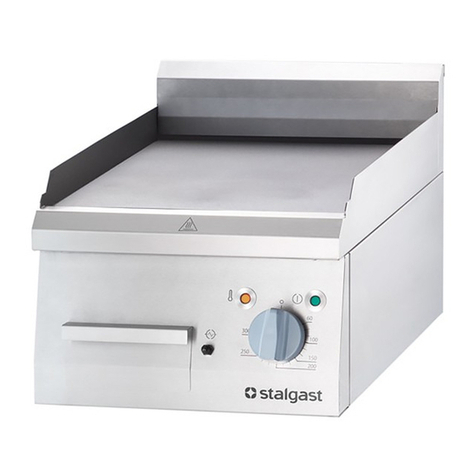
www.dickinsonmarine.com ~ info@dickinsonmarine.com
Form#7.2-257 Issue#2
5
When the BBQ is installed in a recreational vehicle, it must be
installed on the opposite side from a fuel distribution/dispensing
system
When in storage in a recreational vehicle, the BBQ should be
inoperable with no possibility of fuel flow.
When connected to a recreational vehicles fuel system, the BBQ must
be connected to the vehicles propane system with a flexible hose
connector complying with the high pressure requirements of the
Standards for Pigtails and Flexible Hose Connectors for LP Gas,
ANSI/UL 569 and shall be of a length no longer then the required to
allow the grill to be mounted in the “in use” position of its mounting
system.
In recreational vehicles where there is a pull out mounting or storage
system, the extension must pull out far enough so that the BBQ is not
located under and awnings or overhangs, as well as the pull out must
be able to support a minimum of 52lbs (24Kg) when fully extended.
Further to the above, the hose shall be installed in a manner that will
not allow it to come in contact with the hot surface of the grill while
in use or in the travel/storage mode
Maintain a minimum clearance of 36 inches (91cm) between all sides
of grill, patio railings, walls or other combustible material. Not
adhering to these clearances may prevent proper ventilation and can
increase the risk of fire and/or property damage, which could also
result in personal injury
DO NOT build this model grill in an built in or slide construction
This BBQ is not intended for and should never be used as a heater.
Do not use any other regulator other than ones supplied by or ordered
from Dickinson Marine
The BBQ becomes hot when in use. To avoid burns
- DO NOT attempt to move the BBQ
- Wear protective gloves or mitts
- DO NOT touch any of the hot surfaces
- Do not wear loose clothing when using
This BBQ is not intended for commercial use.
***FAILURE TO ADHERE TO THE SAFETY WARNINGS LISTED IN
THIS MANUAL COULD RESULT IN DAMAGE O PROPERTY OR
SEVERE PERSONAL INJURY***
